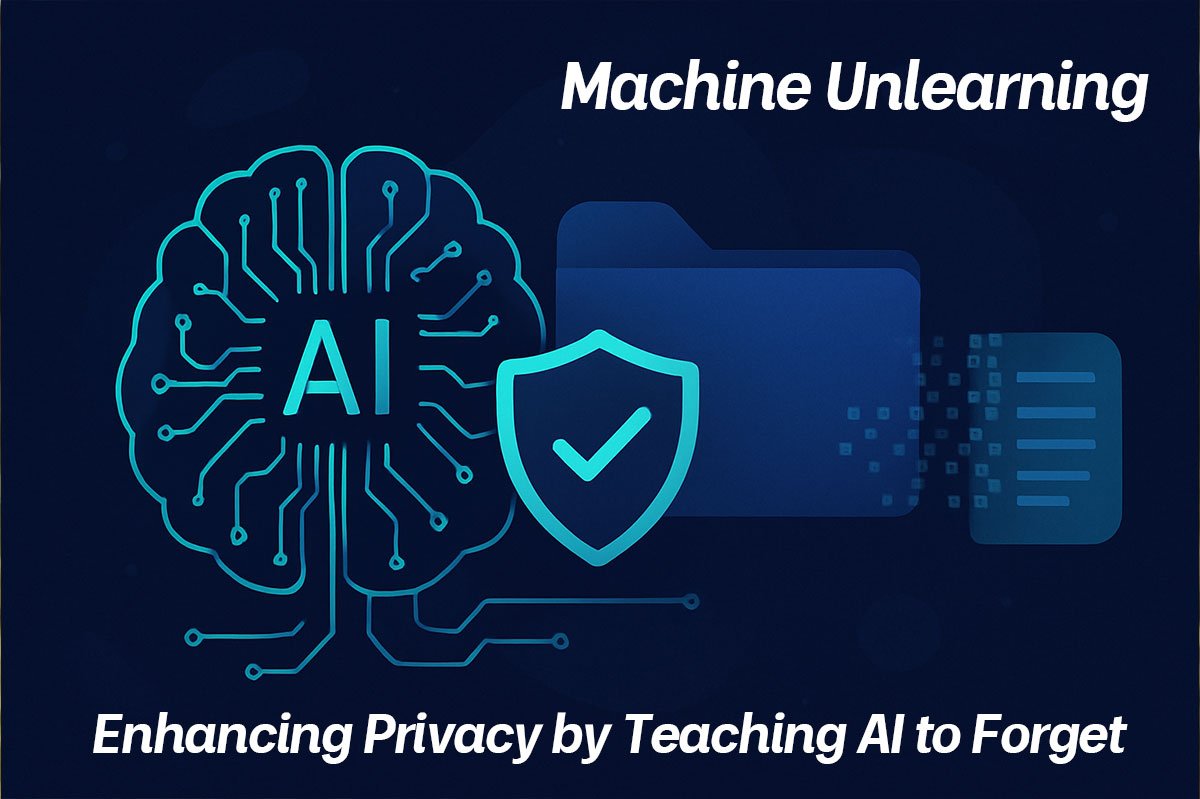Introduction
In a digital world where data is the new currency, businesses are racing to collect and analyze as much information as possible. But with great data comes great responsibility—especially when it comes to privacy. Enter Machine Unlearning: a groundbreaking approach that allows AI systems to selectively “forget” information, giving users greater control over their data and helping businesses stay compliant.
What is Machine Unlearning?
Machine Unlearning is the process of removing specific data from a trained AI model, effectively making the system “forget” that information ever existed. Unlike traditional deletion, which removes data from databases or storage, machine unlearning ensures that the data’s influence is erased from the model’s parameters.
It’s like teaching a student something new—then going back and helping them genuinely forget one particular lesson.
Why Machine Unlearning Matters
1. User-Controlled Privacy
Today’s users demand more control over their personal information. Machine unlearning empowers them to revoke consent and have their data removed not just from storage, but also from the AI systems that learned from it. This builds transparency and strengthens trust between businesses and their customers.
2. Regulatory Compliance
With laws like the GDPR and CCPA requiring the “right to be forgotten,” companies need a practical way to remove data from all systems—including AI. Machine unlearning offers a solution that aligns with these privacy-first regulations.
3. Cost and Performance Efficiency
Outdated or unnecessary data can slow down systems and increase costs. By unlearning irrelevant information, AI models become leaner, faster, and more cost-effective, improving overall performance.
How Machine Unlearning Works
Implementing machine unlearning involves several technical strategies:
-
Retraining from scratch (naive approach): Rebuilding the model without the data in question. Accurate but resource-intensive.
-
Influence functions: Estimate and reverse the influence of specific data on the model.
-
Sharded or modular training: Train models in pieces so that parts can be removed independently.
-
Certified removal methods: Provide guarantees that certain data has been effectively unlearned.
As the field evolves, researchers are exploring faster and more scalable ways to implement unlearning without compromising model performance.
Use Cases for Machine Unlearning
-
Social media platforms: Remove user-generated content or personal data upon request.
-
Healthcare: Delete sensitive patient records from AI diagnosis tools.
-
E-commerce: Remove past purchase behavior if a customer deletes their account.
-
Education: Erase personal learning history in personalized ed-tech applications.
The Future of AI and Forgetting
Machine Unlearning is paving the way for more ethical, accountable AI. As AI systems become more integrated into society, the ability to unlearn will be just as crucial as the ability to learn. Organizations that adopt this technology early can lead the charge in building privacy-first, user-centric AI solutions.
Conclusion
Machine Unlearning represents a powerful shift in how we approach data, privacy, and artificial intelligence. In an age where retaining everything is the norm, the ability to forget—intentionally and effectively—might just be the smartest thing your AI can do.











Leave a Reply